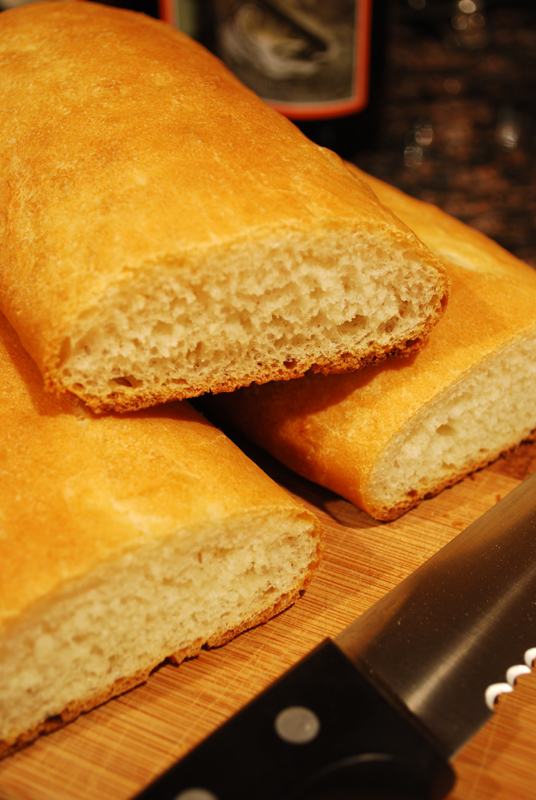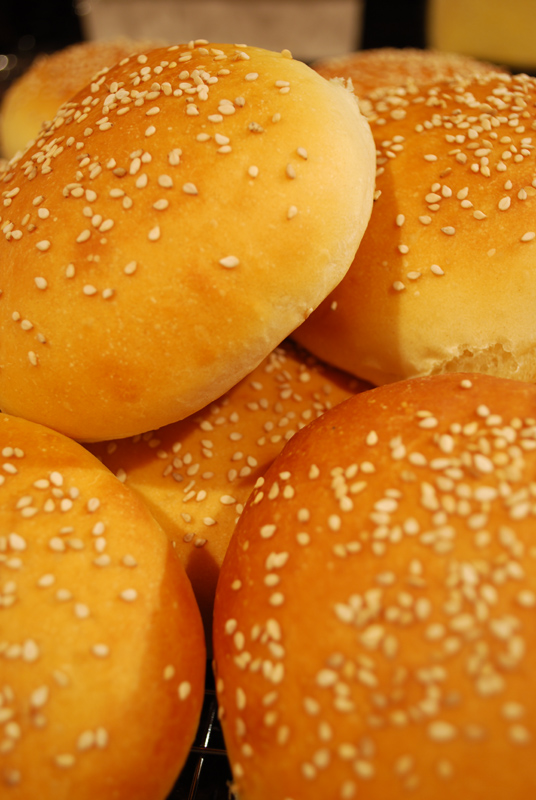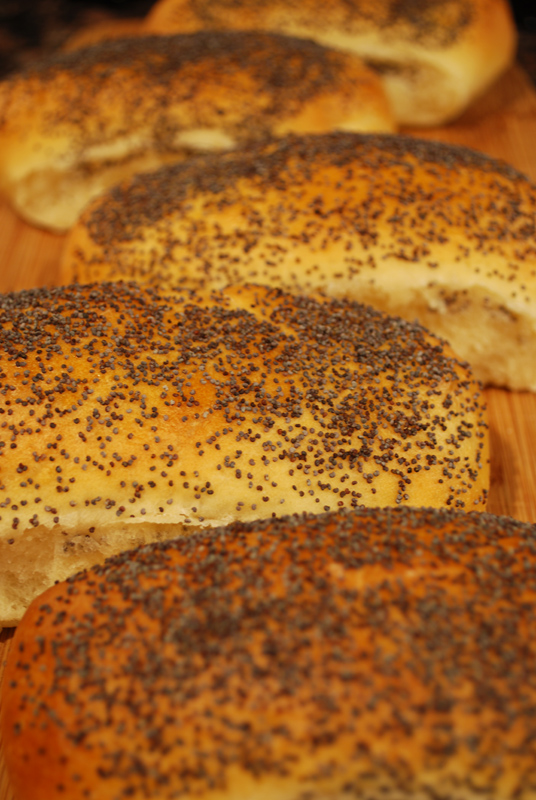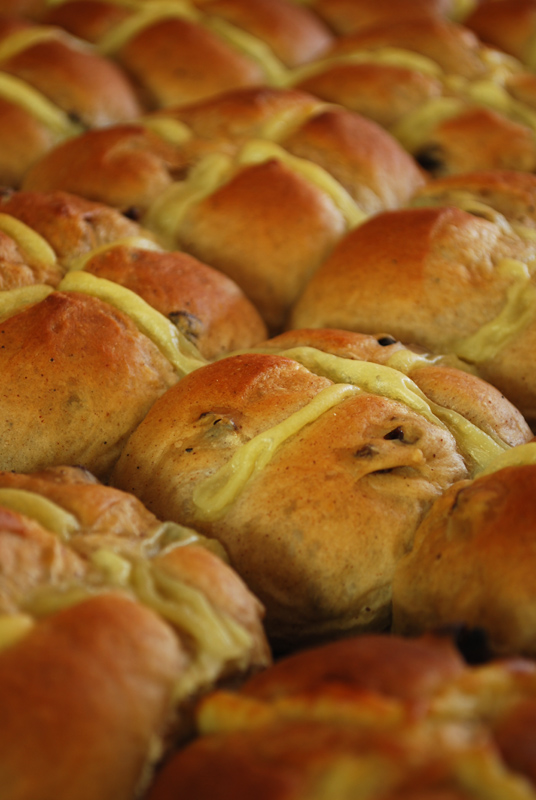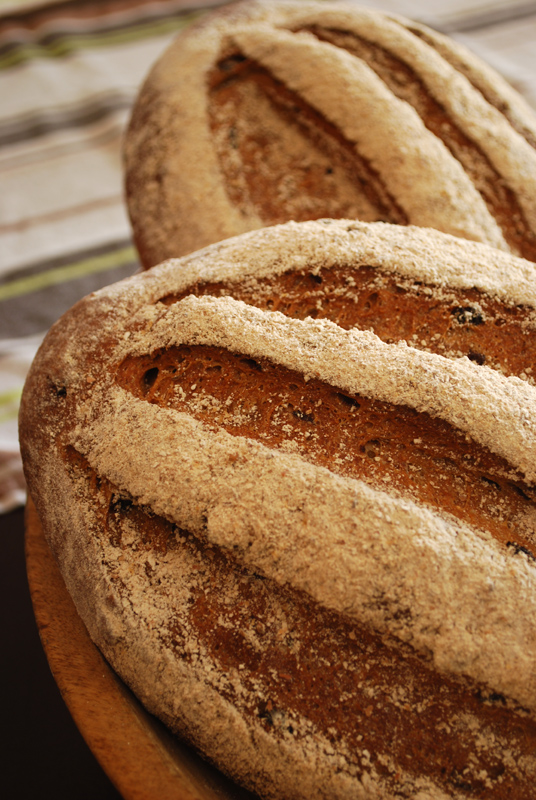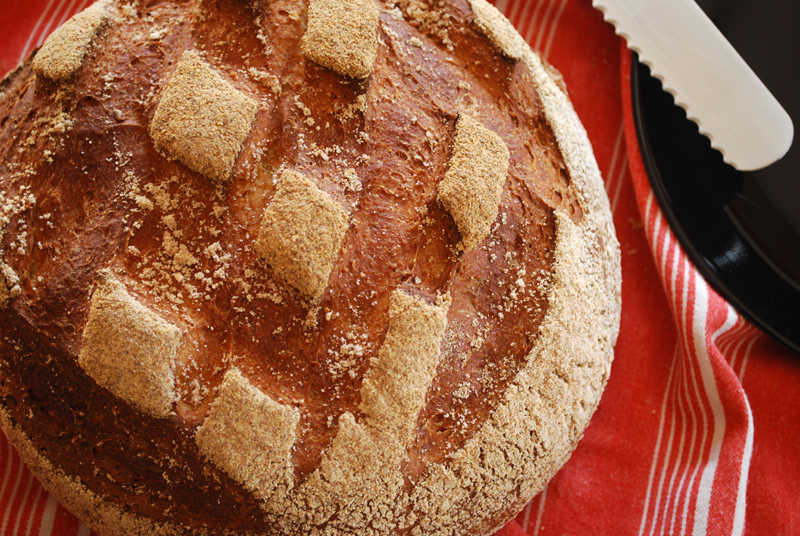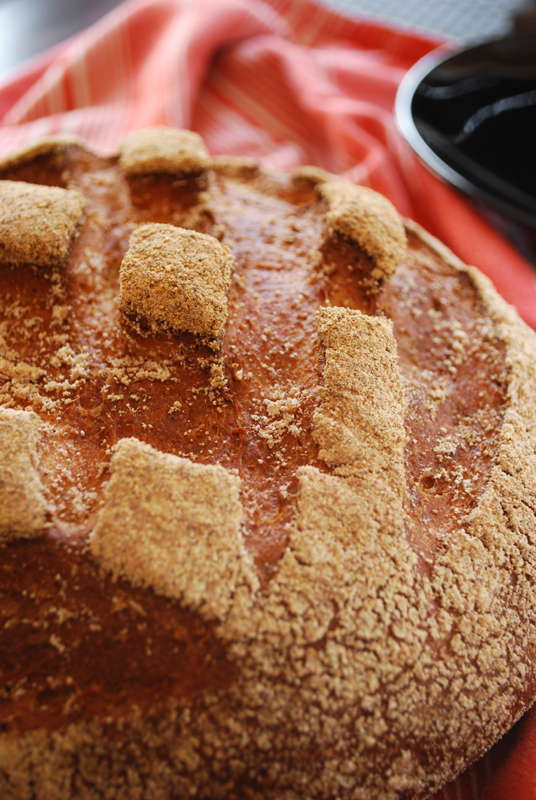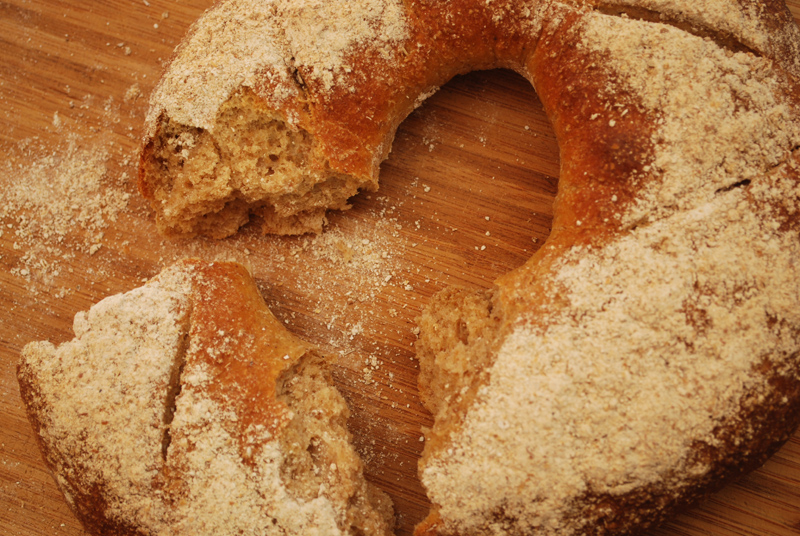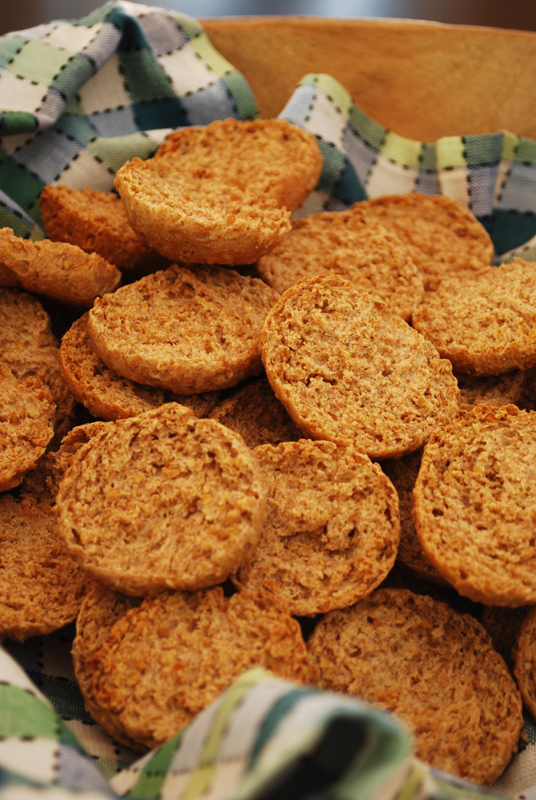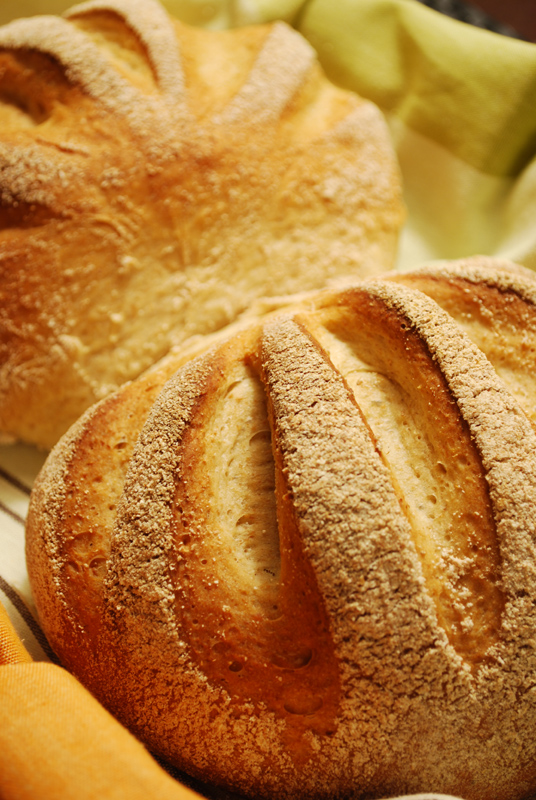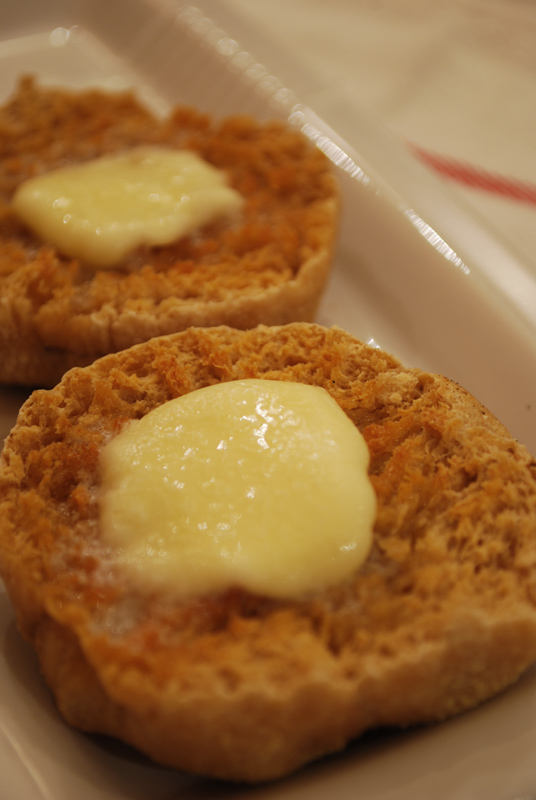Week Sixteen: Sandwich Rolls
I thought there would be no more appropriate bread for today, April 15. But, just so we’re all on the same page here, this recipe does not produce authentic New Orleans style po-boy French bread. It does, however, produce a totally decent loaf of bread with a similar flavor. So if you’re having a po-boy party, and your guests have never even heard of a po-boy, you can safely use this recipe. However, if you’re like me, and have been searching in vain for that elusive and ethereal texture that is both crumbly and chewy, I’m afraid you’ll have to keep looking. I know I will be, and I promise I’ll let you know as soon as I find the secret! (Maybe I should do a week of attempts at this, hmmm.)
Getting on with it: I know po-boy bread isn’t exactly a “sandwich roll” as such. But it is a very specific type of bread for a very specific type of sandwich; in fact, the po-boy sandwich is characterized mainly by the bread, rather than any filling. If you’re not familiar with a po-boy, you may be familiar with its cousins: the sub, the hoagie, the grinder, and so on. But among all these sandwiches, the po-boy is unique, because of the bread.
Oh, you can make a fried shrimp sandwich on any old French bread; but don’t you dare call it a po-boy unless your bread has that crackling, crumbling crust, that gossamer interior, that just-so flavor. The loaves are generally about 3 feet long, and bigger in diameter than a baguette. Did I mention that the crust gorgeously disintegrates into sawdust the instant you pick your sandwich up? But somehow, even through roast beef gravy soaking into every pore, the bread remains chewy. How does it do that?!
And, of course, she sighs heavily, you simply cannot find that kind of bread outside of Southeast Louisiana. The internet is full of displaced New Orleanians desperate to find the secret, some claiming success (or nearly so), most coming close, but always slightly off. You see, in New Orleans, there’s no reason to make such bread yourself. You just grab you a loaf while you’re making groceries, and never give it a second thought. It’s as ubiquitous and as natural as drinking water. It’s only after you move away that you come to the sudden and horrifying realization that no one else eats bread like that. Not anywhere. Ever. So not only are you left high and dry, not even your momma and ‘dem know how to make the stuff when you call for help.
Breadless, we are left to our own devices and recipes. Leidenheimer and Gambino’s (local purveyors of such bread) aren’t about to share their secrets, the stubborn things; but some details have emerged through the murkiness of the internet, and “I heard it from a guy who had a friend who worked there” stories. Word is Leidenheimer uses a sponge. Many swear that it’s the water in the area. Some point to the constant and sauna-like humidity. But whatever it is, it’s darn near impossible to find the exact secret. This is usually the point where the discouraged cook throws up his hands, says, “You just can’t make it like they do back home,” and plans his next trip to New Orleans to gorge himself at Parasol’s, Liuzza’s, or Short Stop.
I made this recipe with high hopes. I had made it once before, a couple of years ago, and remembered it coming out pretty well. The flavor, I remembered, had been spot on, but the texture just wasn’t quite right. Many on the internet have had pretty good success with this recipe; not to mention that it’s got the seal of approval from the Queen of Creole Cuisine herself, the venerable Ella Brennan. So with the confidence instilled by three months of constant breadmaking, I set to work. And at the end of it all, I had four loaves of pretty good French bread, but I still didn’t have my perfect po-boy bread.
As I shook my fist at the heavens, I wondered if there really was something to that whole “humidity” angle. Here I was, making this bread in the tail end of the notoriously dry Chicago winter (it sucks the moisture right out of my skin, for crying out loud), using a recipe developed in 90º heat, with 100% humidity. The point is, this recipe may in fact produce a reasonable facsimile of po-boy bread. But it sure didn’t do so in 40º temperatures, and less percentage humidity.
Oh, and if you’re wondering about the name “po-boy”, you’ll find a very lovely explanation on the Leidenheimer Bakery’s website. The veracity of details may be questionable, but a similar story is often told about the origins of the po-boy, so it’s probably pretty close to the truth. Cum grano salis.
Po-Boy Bread
From Lee Bailey’s New Orleans, by Lee Bailey with Ella Brennan
Makes 4 loaves
2 cups warm water (105º to 115º F)
2 tablespoons sugar, divided
2 tablespoons active-dry yeast
2 tablespoons un-hydrogenated vegetable shortening
6 1/2 cups bread flour (about 1 pound, 13 ounces) divided
1 tablespoon salt
1. Place the 2 cups water in the bowl of a stationary mixer fitted with a dough hook. Add 1 tablespoon sugar and sprinkle with the yeast. Allow to sit for about 15 minutes, until the mixture is bubbling.
2. Add the remaining 1 tablespoon sugar, the shortening, and 5 cups of flour. Mix until a dough starts to form. Add the salt and the remaining flour as needed until the dough forms a ball and pulls away from the sides of the bowl. Continue to knead with the dough hook for 10 minutes.
3. Turn the dough out onto a lightly floured board and knead by hand for a minute or two, until dough is smooth and elastic. Return it to the mixing bowl, cover with plastic wrap, and set in a warm, draft-free corner to rise for 1 1/2 hours, or until doubled in size.
4. Punch the dough down, then divide it into four balls. Cover these with a clean dishtowel and let them rest for 15 minutes. Form each ball into a 16 x 3 inch loaf. Place the loaves on baking sheets, cover them with a damp cloth, and set aside to rise for 1 1/2 hours.
5. Preheat oven to 375º F. Gently place the fully risen loaves in the preheated oven and bake for about 30 minutes, until just golden brown. Cool on racks.
Notes:
1. If you have a good recipe for bread used in bahn mi, those wonderful and addictive Vietnamese sandwiches, that bread is somewhat similar to the texture of po-boy bread. Oh, and send it my way please!

